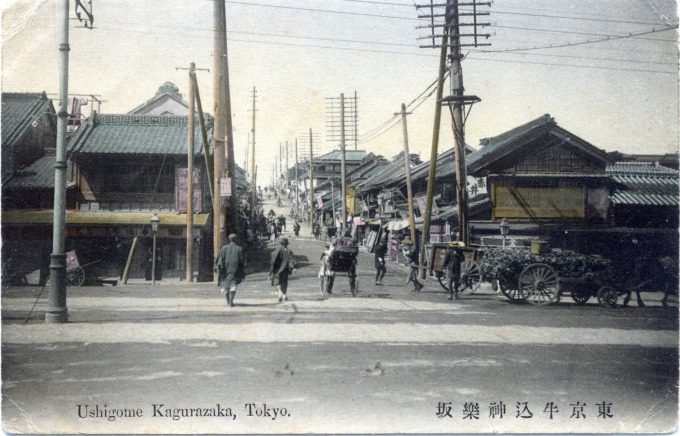“The interest here lies on paper, in maps, for this is one of the few parts of Tokyo left that have yet to be deprived of their many, old, and colorfully varied names. There are all sorts of fascinating names to the districts of this area, not the least of which is the name Kagurazaka itself.
“Kagurazaka means Slope of the Music of the Gods, an entrancing name indeed. The trouble is no one quite knows why it is called this. Most of the old chronicles tend to favor the theory that it got this name because when nearby Ichigaya Hachi-mangu, one of Tokyo’s oldest shrines, held its festival, the portable shrines and floats and bands of musicians passed down the slope on their merry, meandering way through the streets of the area.
“On the crest of the hill is a temple dedicated to Bishamon, one of Buddhisms’s protective deaties … Opposite Bishamon’s temple is a maze of alleys full of steps and corners and dead-ends that contain the last remaining traditional restaurants that in the Meiji and Taisho eras made Kagurazaka one of the preeminent geisha quarters of the Yamanote hills.”
– Tokyo Now and Then: An Explorer’s Guide, Paul Waley, 1984
Kagurazaka, Tokyo, c. 1910.
1910s • Geisha/Maiko/Onnanoko • Neighborhoods (Misc)
Tagged with: Kagurazaka, Kudan, Ushigome
Please support this site. Consider clicking an ad from time to time. Thank you!



Pingback: japon vintage | tokyo fever
Pingback: Tokyo Letteraria: sulle tracce di Natsume Soseki